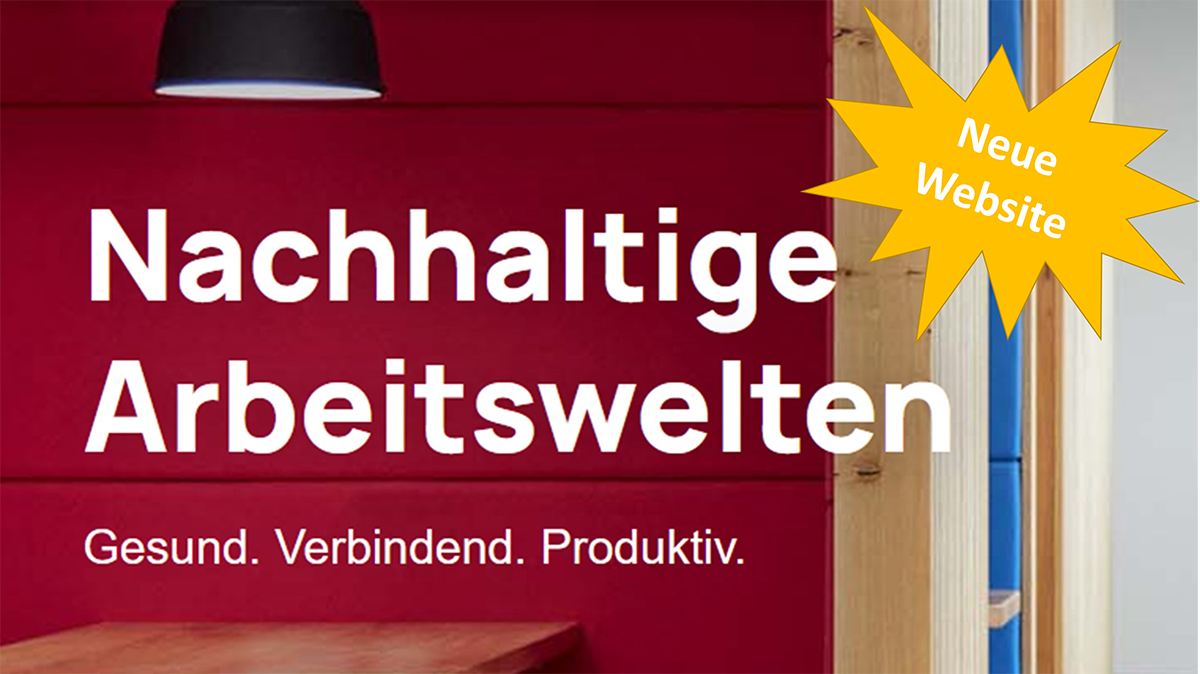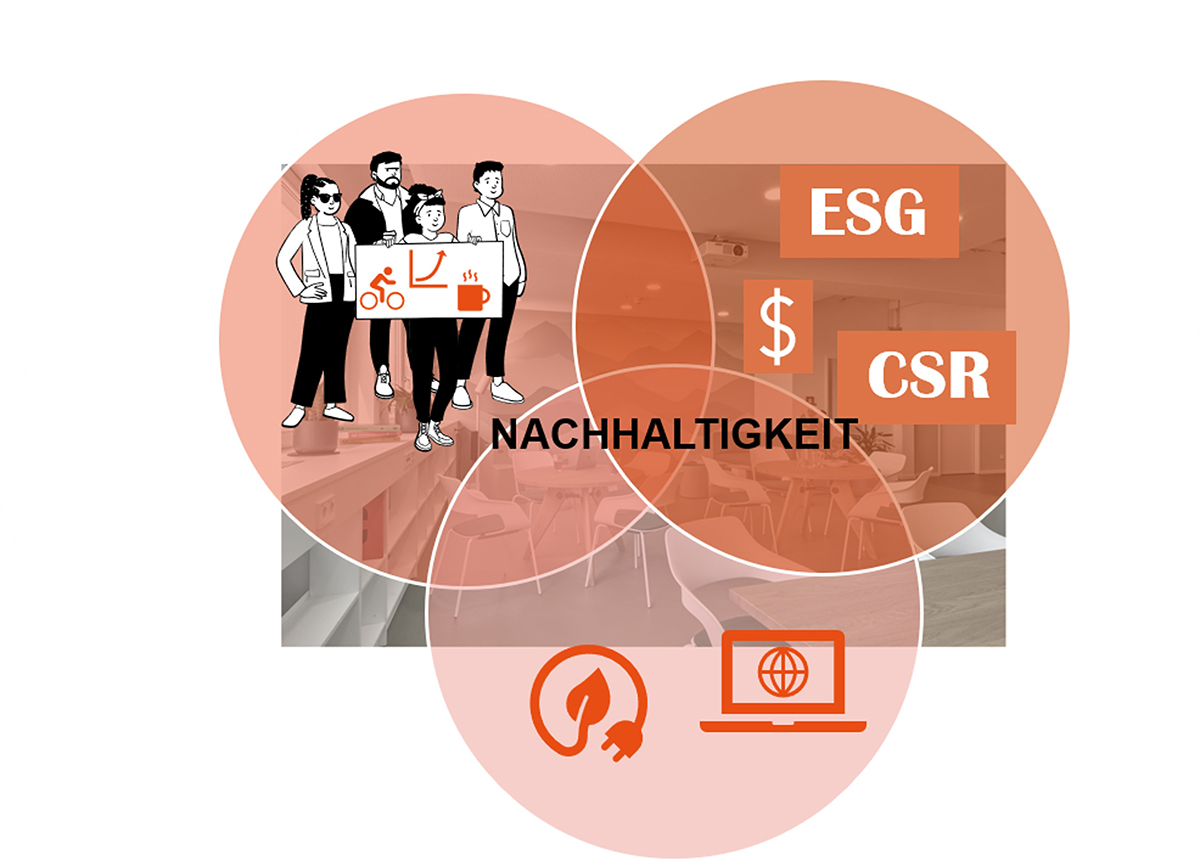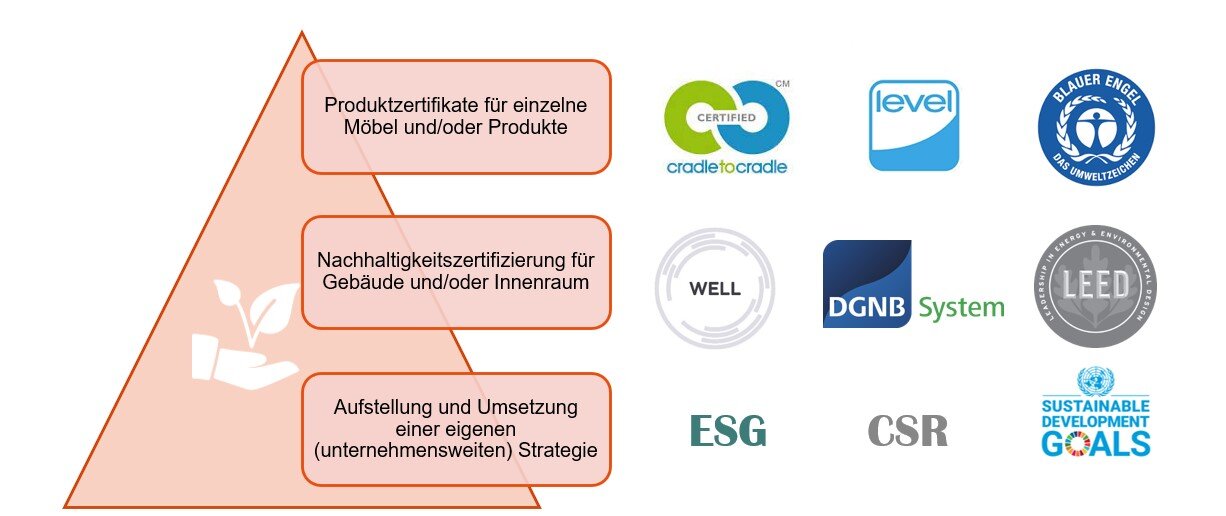Sustainability as an intersection of user needs, certification offers, market requirements and corporate culture
Showers, height-adjustable desks, regional fruit, good public transport connections, office furniture and floor coverings made from harmless materials - the list of individual measures for sustainable working environments goes on and on. In addition, due to the current energy crisis and in order to achieve climate targets, we are called upon to save energy and resources and to operate in a circular economy. Digitalization also brings with it requirements for the building of tomorrow and at the same time offers opportunities: thanks to digitalization, building data can be evaluated in a targeted manner and offices can be cooled and heated in an optimized manner. With the help of simulations and calculations, new buildings are already being planned in such a way that a high level of daylight autonomy and good acoustic comfort are optimally implemented and make a significant contribution to user comfort.
When selecting materials and furniture, sustainability criteria include limit values for harmful substances, which the future furnishings must meet and which ensure that the interiors are harmless to users' health. This can be based on standard environmental or sustainability labels such as the Blue Angel or LEVEL. The construction industry has been transparent about this for some time, and furniture manufacturers are encouraged to do the same in order to remain competitive in the market. Other sustainability indicators include calculating the life cycle assessment and life cycle costs: how much gray energy do the fit-out and furnishings require and what are the costs of construction and operation over 15 years, for example? In terms of floor space, this results in benchmarks that can be objectively measured. All of these are aspects of sustainability. It is the intersection that combines all these requirements for the interior spaces and has a real impact as a holistic concept developed for the company
From a sustainable working environment to a company-wide sustainability strategy
The objective of a sustainable working environment should therefore be part of the planning from the outset and involve the users. Nothing is less sustainable than spaces that do not work and are not designed for their intended purpose. Nothing is less sustainable than new New Work environments that do not involve employees in active communication and change management. Every company should determine the depth of its sustainability concept in accordance with its corporate culture and sustainability goals. For some, it makes sense to pay attention to environmental and health compatibility when selecting materials and products and to create as much comfort as possible for employees. For others, the support provided by sustainability certification of buildings in accordance with the systems commonly used on the market, such as WELL, DGNB or LEED, is a logical step towards sustainable working environments.
Sustainability would be fully anchored in company-wide office environment concepts that are applied at all locations and can also provide content on topics such as ESG and CSR. Our consultants take regulatory requirements into account and can already provide companies with key figures and content for reporting on ESG or energy efficiency issues, for example.
Take a look at our new website "Sustainable working environments" for more information and best practices.





